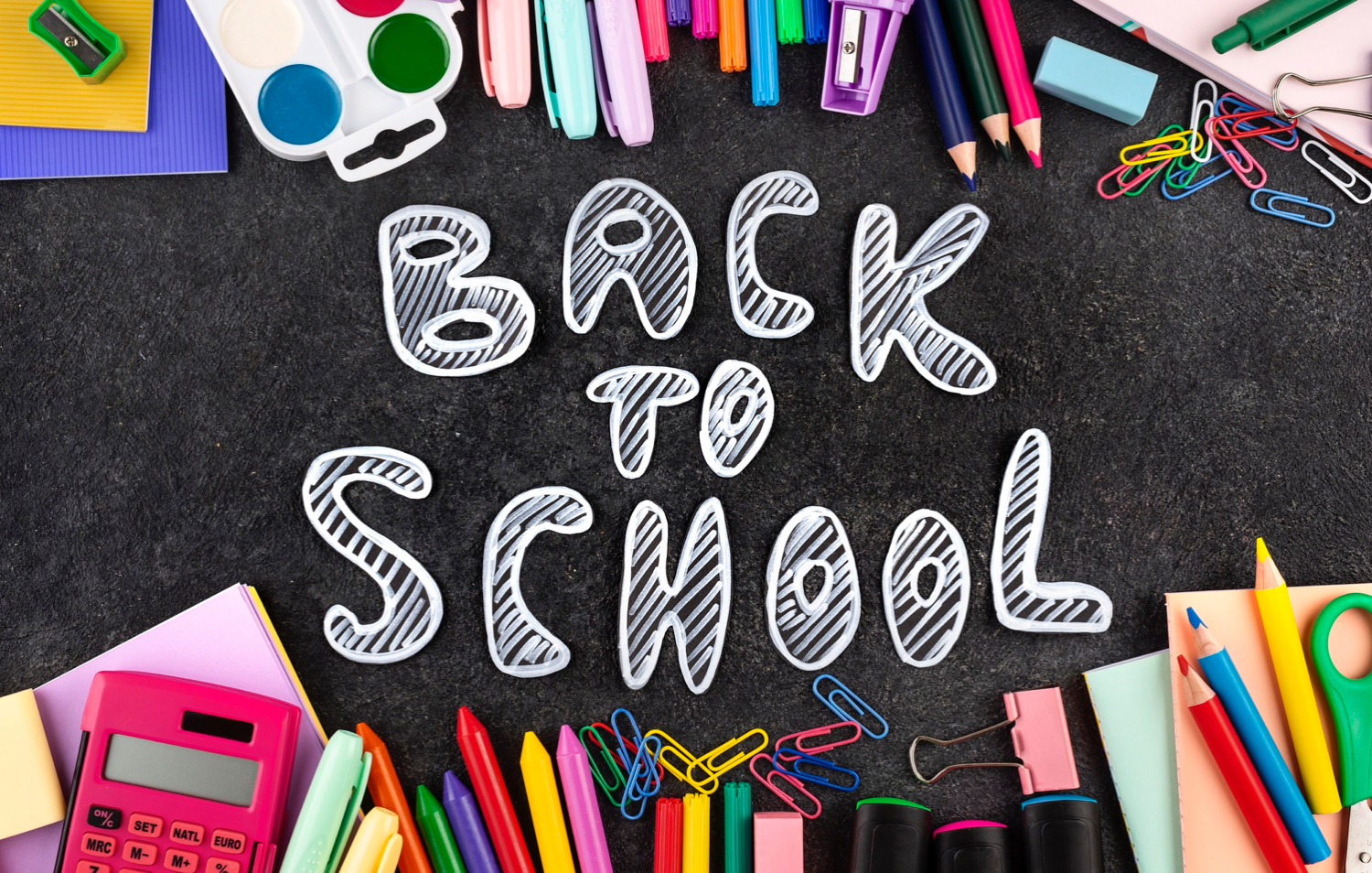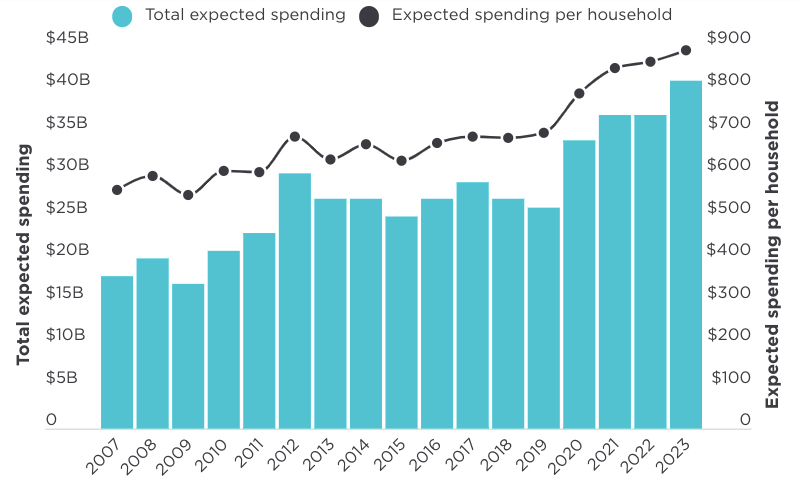
Navigating the Back-to-School Rush
As summer fades and a new school year approaches, retailers gear up for the back-to-school season—the second-largest retail event after the winter holidays. This annual shopping frenzy presents both opportunities and challenges for businesses aiming to meet the diverse needs of students, parents, and educators across both physical stores and e-commerce platforms.
In this fierce marketplace, strategic planning emerges as the secret weapon. Working tirelessly behind the scenes, retailers strive to create seamless shopping experiences that satisfy customers and boost sales.
Their goal is to ensure that when the first school bell rings, both shoppers and businesses can look back with pride on a successful season that sets the tone for the rest of the year.
The ABCs of back-to-school shopping
The back-to-school market is a complex and dynamic ecosystem, influenced by various factors such as changing consumer preferences, technological advancements, and economic conditions.
For retailers to succeed, understanding the diverse needs of their target audience is paramount. The K-12 segment, comprising students and their parents, represents a significant portion of the market. These shoppers are on the hunt for a wide array of products, from traditional school supplies to clothing and increasingly, electronic devices. The demands vary across age groups, with younger students typically requiring basic supplies while older ones seek more specialized items.
According to the National Retail Federation (NRF), back-to-school spending reached a record $41.5 billion last year for students in kindergarten through 12th grade. When including college students, the total spending surged to $135.5 billion.

Source: NRF’s Annual 2023 Back-to-School Survey, conducted by Prosper Insights & Analytics
College students form another key segment, bringing a distinct set of requirements to the table. Their shopping lists often include dorm room essentials, textbooks, laptops, and other tech products. Campus requirements, course loads, and the desire for independent living heavily influence their purchasing decisions.
The timing of back-to-school shopping is evolving. While late July and early August remain peak periods, a growing trend sees consumers starting their shopping earlier. This allows families to spread out expenses and take advantage of early promotions. In contrast, some shoppers are opting to delay purchases until after the school year begins, hoping to snag clearance deals or better assess their needs.
The consumer trend playbook
Families are starting their shopping earlier this year, driven by a desire to avoid last-minute rushes and better manage their budgets in the face of economic uncertainty.
Economic factors, particularly rising costs and inflation, are playing a significant role in shaping shopping habits. Consumers are adopting more cautious and strategic approaches, carefully planning purchases and seeking the best value for their money. This has led to an earlier start to the back-to-school shopping season, with many families beginning their purchases as early as late June or early July.
Despite economic pressures, spending on back-to-school items are expected to remain steady according to Deloitte. However, this doesn’t mean consumers are spending frivolously. Instead, they’re becoming increasingly price-sensitive and selective in their choices. Shoppers are actively comparing prices across different retailers and online platforms, looking for the best deals.
Discounts, promotions, and sales events are proving to be major influencers in purchasing decisions. Parents are prioritizing essential items, focusing on value over retailer loyalty, quality, and durability, especially when it comes to technology and clothing.
A+ retail strategies and deals
Retailers are now targeting consumer spending well before August, moving beyond the traditional peak season focus. Research shows that shoppers who make their purchases ahead of time tend to spend 1.5 times more than those who delay their buying decisions. By targeting these proactive buyers, the strategy aims to boost sales before the summer season concludes.
However, staying visible throughout the entire season is still essential. Late shoppers in September shouldn’t be overlooked, and a phased approach helps retailers maintain momentum and capture different shopper segments as they enter the market.
Brands are increasingly using exclusive deals and time-sensitive promotions to create a sense of urgency among consumers. For example, Staples offers school supplies starting at $0.35, while Office Depot has items beginning at just $0.20.
Walmart is also aggressively discounting thousands of products under $10 and offering “Walmart Deals” with savings on a wide range of items, including back-to-school, tech, toys, outdoor gear, travel, and more.
While discounts remain a key strategy, some retailers are exploring alternative methods to add value without solely relying on price reductions. Loyalty program perks, and membership-exclusive sales events are gaining traction as ways to offer value beyond just the price tag.
Amazon Prime Day is exclusive to Prime members, who receive perks such as free expedited shipping. Likewise, Walmart+ Week offers a seven-day sales event with special deals and discounts available only to Walmart+ subscribers. As Target’s back-to-school season kicks off, the retailer is celebrating Target Circle Week, its “biggest sale of the season.” This special event is exclusively for Target Circle members, who can access automatic deals and special offers throughout the week.
Schooling the competition
Savvy companies are overhauling their strategies to keep pace with shifting shopper preferences. In a fierce race to stay ahead, they’re crafting bespoke marketing moves. By tapping into customer insights, these brands are serving up tailor-made messages and deals that resonate.
Despite the rise of e-commerce, the in-store experience remains essential for brick-and-mortar retailers, particularly for items like clothing that often require try-ons. Many businesses are reimagining store layouts to create intuitive, grade-specific sections that simplify the shopping process. In-store technology is also advancing rapidly, with mobile point-of-sale systems reducing checkout times and interactive kiosks and augmented reality displays enhancing product exploration and visualization.
To complement these physical improvements, companies are focusing on creating a seamless omnichannel experience, integrating online, in-store, and mobile platforms to cater to diverse shopping preferences.
This integration extends to their digital presence, with investments in easy-to-navigate websites and mobile apps featuring robust search functions. For example, Staples streamlines back-to-school shopping with a ZIP code-based search feature that allows parents and students to access their school’s supply checklist, while also enabling teachers to upload their class lists to the site.
Bridging the gap between digital and physical shopping experiences, innovative tools such as Google’s virtual try-on Shopping Graph and 360-degree product views are being adopted by brands.
Beyond technological advancements, the human element of retail remains crucial. Staff training has become a priority, ensuring employees can provide expert guidance to parents and students alike. This focus on personal interaction extends to customer service, which has taken center stage across multiple channels. Retailers are bolstering their support systems, recognizing that quick response times and friendly assistance are now key differentiators in building customer loyalty.
Grade-A marketing efforts
Content marketing has become a key pillar of back-to-school campaigns. Retailers are now positioning themselves as essential resources by providing everything from detailed back-to-school checklists to fashionable style guides and practical study tips. This approach not only provides tangible value to customers but also drives traffic and potentially boosts sales.
Social media platforms like Instagram, TikTok, and Snapchat are also proving to be powerful tools for product showcases, interactive contests, and influencer partnerships. 35% of people shopping for back-to-school items online use social media to find products and deals. User-generated content is taking center stage, with retailers encouraging customers to share their purchases, fostering a sense of community around their brands.
Beyond digital engagement, retailers are also tapping into consumers’ desire for meaningful purchasing experiences. Recognizing the growing preference for socially responsible brands, particularly among younger shoppers, companies are launching initiatives that go beyond profit. Winn-Dixie for instance, is supporting back-to-school savings with low prices and its new Community Bag initiative. For every $2.99 reusable bag sold in August, the company will donate $1 to local schools. Each bag bought results in directly contributing to education in their area, allowing shoppers to make a positive impact on their community while preparing for the new school year.
Passing the test of inventory management
Retailers are increasingly turning to advanced analytics and artificial intelligence to gain an edge in this shopping period. By processing historical sales data with unprecedented accuracy, retailers aim to strike the perfect balance of inventory – a challenge that can make or break their seasonal success.
The risks of miscalculation are significant. Understocking can result in empty shelves and lost sales, while overstocking ties up capital in unsold merchandise. In response, merchants are fine-tuning their inventory management to meet demand without surplus.
But it’s not just about how much—it’s about what. While Number 2 pencils never go out of style, retailers are always on the hunt for the next big thing. From eco-friendly supplies to the latest tech must-haves, stocking trend-setting items can give stores the edge in a cutthroat market.
The landscape is further complicated by the rise of omnichannel strategies. 84% of shoppers demand swift, reliable, and convenient delivery options, pushing retailers to elevate their shipping game. Services like buy online, pick up in-store (BOPIS) necessitate a seamless blend of digital and physical inventories, adding yet another layer of intricacy to inventory management.
This shift towards a more integrated shopping experience, however, is just one piece of a larger puzzle that retailers must solve. Recent global events have cast a stark light on the critical need for resilient supply chains. The COVID-19 pandemic, escalating geopolitical tensions, and the increasing frequency of extreme weather events have exposed glaring vulnerabilities in traditional models.
In response, many are adopting strong contingency plans and building closer relationships with suppliers to ensure priority deliveries during peak seasons and the flexibility to quickly adjust inventory across locations.
Building lasting success
Navigating the back-to-school rush requires a multifaceted approach that combines market understanding, efficient operations, strategic marketing, and a focus on customer experience.
The back-to-school period offers more than just a short-term sales boost; it presents an opportunity for retailers to establish lasting relationships with customers and set the tone for the remainder of the year. By delivering exceptional experiences during this crucial time, retailers can earn customer loyalty that extends far beyond this season.
This period also serves as a testing ground for new products and services that can be implemented for future shopping events. Customer preferences, popular product categories, and effective promotional tactics identified during back-to-school can guide inventory planning, product development, and marketing strategies for subsequent seasons.
Discover how our predictive analytics can give you the competitive edge this back-to-school season.

